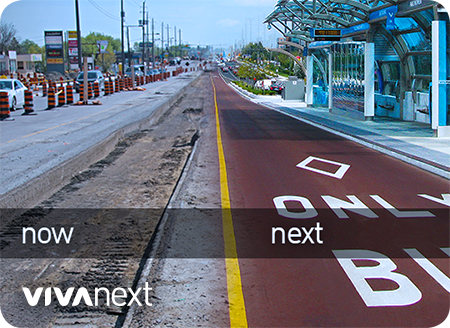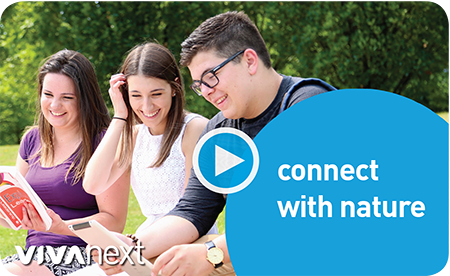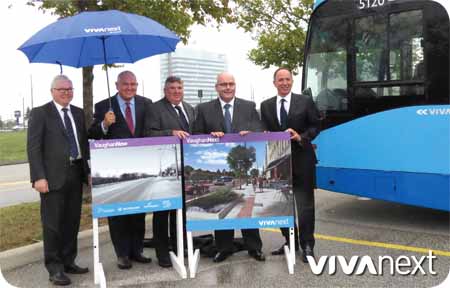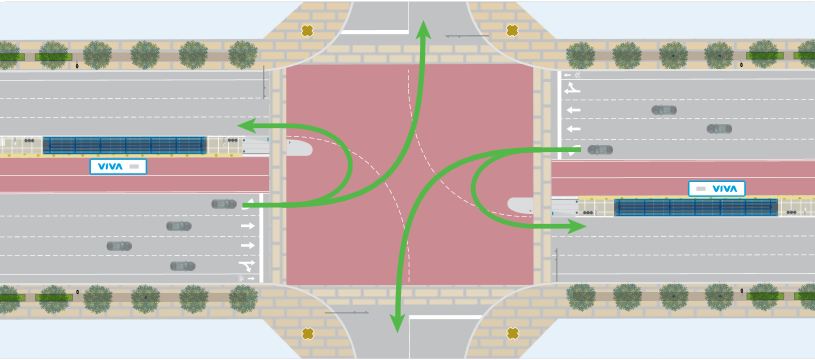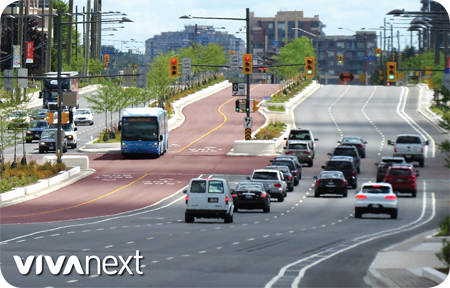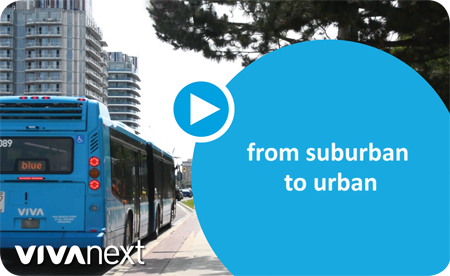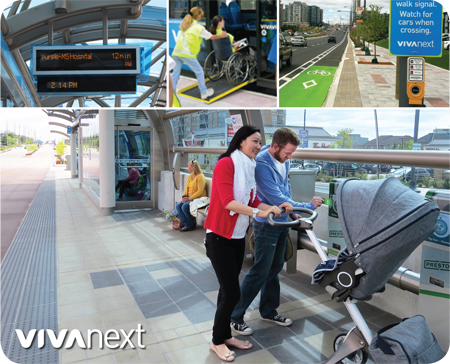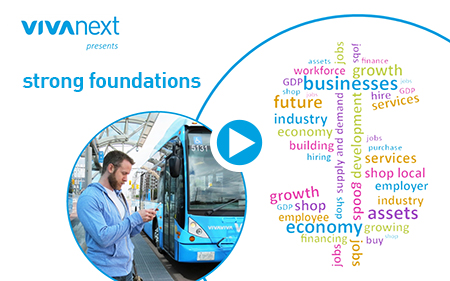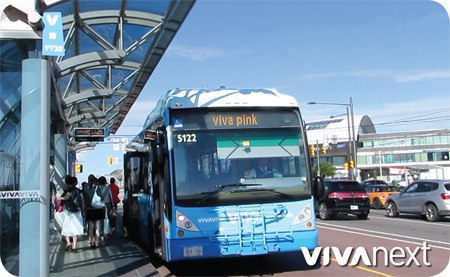Final paving is here! This week you’ll start to see the distinctive red asphalt on the rapidway and intersections along the Davis Drive corridor in Newmarket. It’s exciting because final paving means that underground utilities and infrastructure work is complete, the road has been widened to accommodate the centre lane rapidway and the medians and curbs are in place. All these elements help define a new urban destination for Newmarket. This is a significant milestone in the transformation of Davis Drive.
If you travel along Davis on a regular basis, you’re already aware of the fundamental changes that have been made to the way people drive, walk and ride on the corridor. New intersections allow for protected left-turns and u-turns, and feature optional two-stage pedestrian crossings, and accessibility features like audible chirps to aid people who are visually impaired. For the eco-conscious, the greenery planned for Davis Drive and the connections to paths like the Tom Taylor Trail will make the sidewalks and boulevards inviting spaces for all.
It’s not just Davis that’s getting a shiny new coat, the side streets that connect to Davis will be paved at the intersections so that they tie-in nicely with the new road.
Even after years of planning, design and construction, the rapidway just feels more tangible and real when we apply our distinct red asphalt to the road. There’s something special about knowing that you’re contributing to the future growth and prosperity of entire neighbourhoods, towns and regions by connecting people to the places they work, shop and play.
We are already seeing the benefits of improved traffic flow and travel times along Highway 7 in Richmond Hill and Markham, and the YRT/Viva network continues to grow.
To get there is a messy process, there’s no doubt. But we are asking you to hang in there with us over the next month or so, and we hope that you’ll share our enthusiasm for the finished product.

